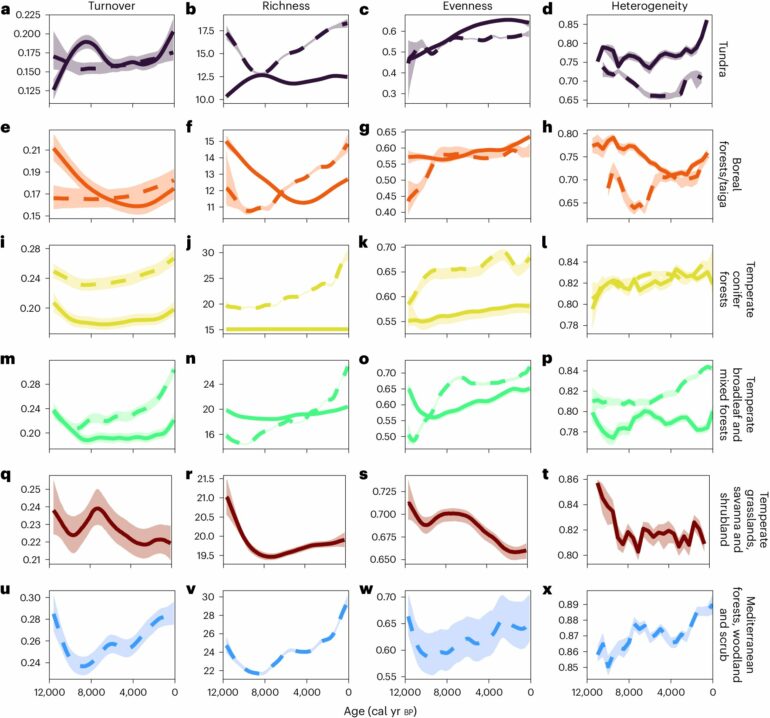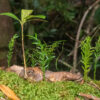Humans have been an important driver of vegetation change over thousands of years, and, in some places, had positive impacts on biodiversity, according to a new study.
Researchers at the University of York utilized a global pollen dataset to help understand the variety of plant communities dating back to around 12,000 years ago, the beginning of the period known as the Holocene.
Over this time period up until the start of the Industrial Revolution, the speed that different types of plants changed within a community accelerated with increased human land use in all continents, suggesting that humans have been an important driver of vegetation change.
However, the team’s analysis of data from pollen records revealed that the nature of these changes varied geographically.
Mixed picture
Plant communities became increasingly diverse across most of the northern hemisphere, linked to human activity over the period, but in Africa, South America and some parts of North America, increased human land use saw a fall in plant diversity, while locations with more limited human land use saw increases in diversity.
Jonathan Gordon, postdoctoral researcher at the University of York’s Leverhulme Center for Anthropocene Biodiversity, who led the study along with experts from the Department of Archaeology and the Department of Mathematics, said, “When we read headlines about threats of extinction to animal or plant life, human activity is often cited as one of the main reasons for the decline.
“While it is absolutely true that the vast majority of extinctions taking place since 1500 have been driven by humans, over longer time periods the effects of humans on local and regional biodiversity are positive in many areas.”
Intense land use
The study, published in Nature Ecology & Evolution, showed that farming and forestry practices interacting with regionally specific plant communities resulted in increased diversity in many of the once-forested areas of the northern hemisphere, where partial clearing of trees to make way for animals, crops and homesteads increased the diversity of habitats and made space for light-loving plants.
Gordon said, “We see a slightly different picture in open grasslands and savannas, compared to forested areas, however, and this could be because it is more challenging for humans to diversify plant life by planting trees, compared with chopping trees down in forested regions. In these areas, biodiversity only benefited with less intense forms of human use.”
Future policy
The research calls for a more varied approach to increasing biodiversity across the globe, with evidence from thousands of years of human interactions with the Earth’s ecosystems being taken into account in new and future environmental policy.
Professor Chris Thomas, from the Leverhulme Center for Anthropocene Biodiversity, said, “The common assumption when tackling biodiversity issues is that human influence needs to be removed in order for the environment to thrive as nature intended it to.
“In many places, biodiversity thrives because of many thousands of years of human activities, and in others it can suffer, and so it is important to know the differences in order to develop appropriate conservation policies.”
Gordon added, “In a European context, for example, this work suggests that low-intensity, traditional farming methods practiced over multiple millennia resulted in elevated biodiversity levels. Encouraging traditional methods and reintroducing them in locations where they have now been abandoned, could be part of future conservation strategies that seek to include, rather than reject out of hand, humans from diverse ecological systems.”
More information:
Jonathan D. Gordon et al, Floristic diversity and its relationships with human land use varied regionally during the Holocene, Nature Ecology & Evolution (2024). DOI: 10.1038/s41559-024-02457-x
Provided by
University of York
Citation:
History shows that humans are good for biodiversity… sometimes (2024, July 12)



